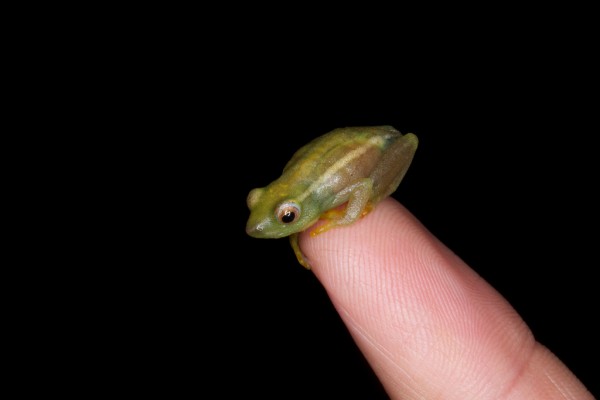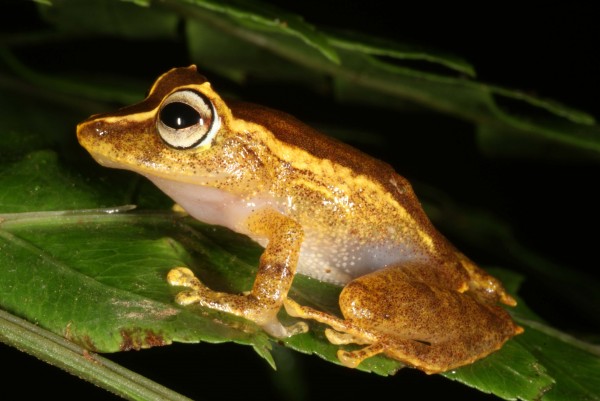Cute Frog of the Week: February 25, 2013
This little polka-dotted guy is actually one of the most distinctive poisonous frogs. Adults are black or brown, sporting fashionable white “polka-dots” that cover their entire body. This spotting is highly variable from frog to frog, with the exception of a single spot under the chin and an oval spot on the underside of the thighs. The species is known from a single location in the vicinity of Santa Rosa, Cajamarca, Peru and often lives in giant bromeliad flowers. Unfortunately, because of land destruction for coffee farms in the area around Santa Rosa, this species is losing its habitat and becoming severely threatened in the wild. Humans have also begun to want these beautiful amphibians as terrarium pets. These threats have caused the IUCN to classify the spotted frog as endangered by the IUCN.
Photo by Jean-Francois Brousseau via ARKive.
Every week the Panama Amphibian Rescue and Conservation Project posts a new photo of a cute frog from anywhere in the world with an interesting, fun and unique story to tell. Be sure to check back every Monday for the latest addition.
Send us your own cute frogs by uploading your photos here: http://www.flickr.com/groups/cutefrogoftheweek/






